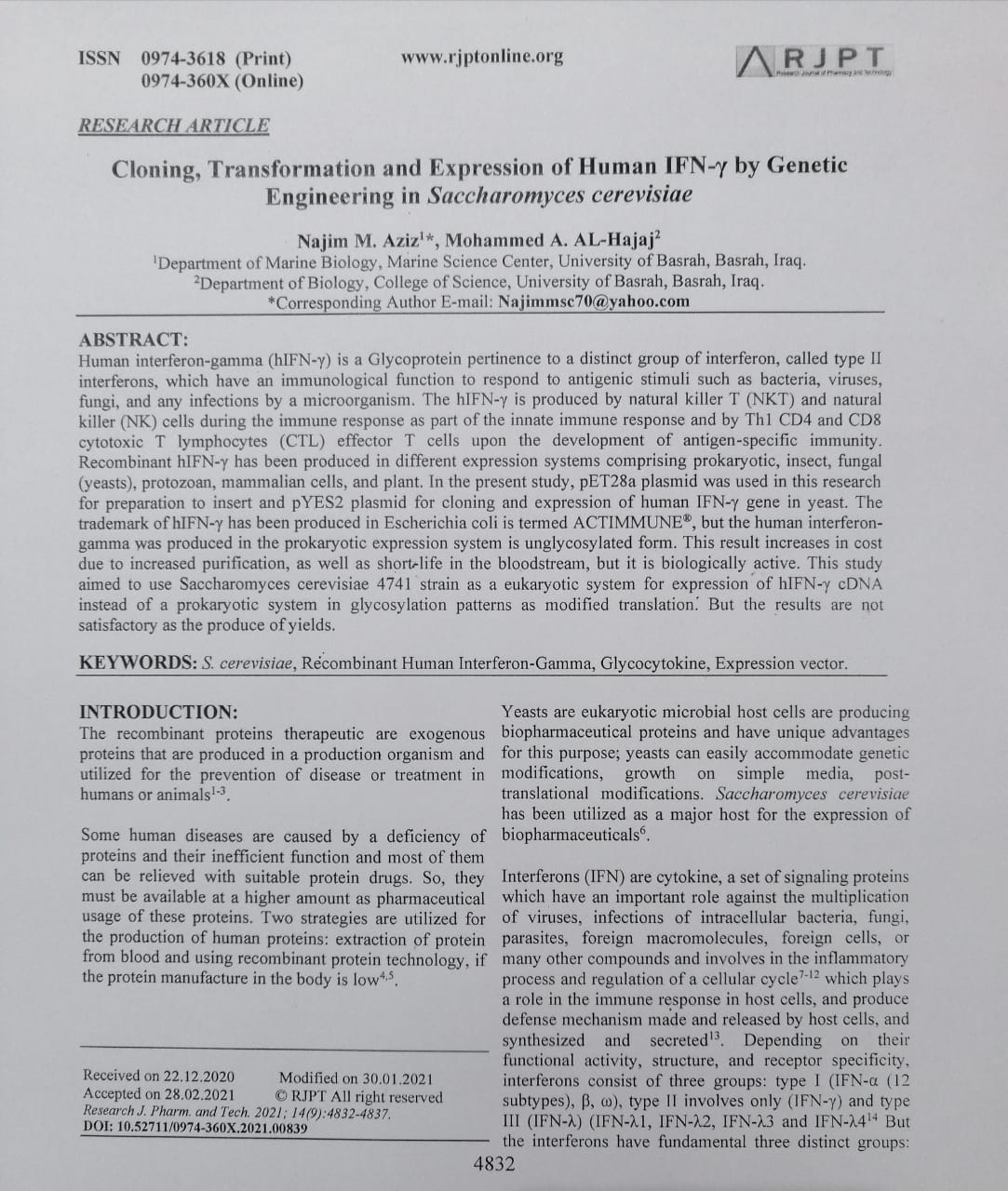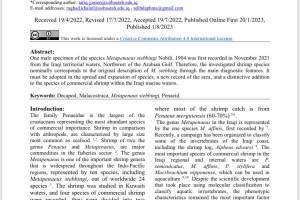

Marine sciences center
A scientific study was researched at the University of Basra, prepared by Dr. Najm Mohsen Aziz, lecturer at the Marine Science Center, and Dr. Muhammad Al-Hajjaj, professor at the College of Science, which was published in the Research Journal Pharmacy and Technology, which is classified within Scopus Q3 containers.
The active gamma interferon gene was genetically engineered using a strain of yeast Saccharomyces cerevisiae in vitro. The biological efficacy of the protein produced was also studied.
The gene synthesized and encoded for the interferon gene was used, as the gene was manufactured by the German company Genscript based on the sequence of the nitrogenous bases of the gene with the addition of cutoff sites for the BamHI enzyme at the 5` end and another site for the XhoI enzyme at the 3` end. Clear package in agarose gel electrophoresis.
The target gene was inserted into the vector pYES2 by treating both the gene and the vector with the aforementioned fragment enzymes, then the resulting DNA segments were combined and then the hybrid vector was transformed into a genetically engineered yeast strain of BY4741 Saccharomyces cerevisiae
The produced protein was purified by affinity chromatography, where nickel-charged resins were used, due to the tendency of nickel to strongly bind with His. Tag contained within the integrated protein
The gamma interferon protein was obtained with high concentrations of imidazole (500mM) in the downstream solution, which displaces His. Tag releases the produced protein and the protein appears in clear bundles during electrophoresis using acrylamide gel.
The study concluded that the mutant strains have the ability to produce the interferon protein, which has biological activity compared to the protein produced from blood cells naturally. and cancerous.





.jpg)

.png)